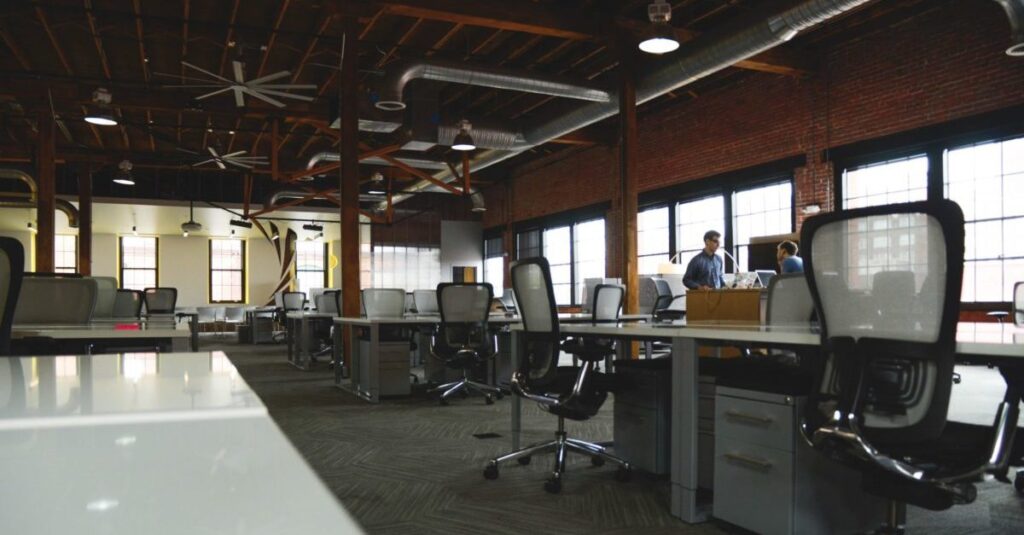Most importantly, are WORKPLACES ready to have EMPLOYEES come back!? Although the COVID-19 pandemic has brought about a radical change in work environments, and while remote working becomes the new normal, going back to office has its challenges that need comprehensive evaluation.
The Changing Workplace Scene
Businesses had to react very fast during the pandemic. That which was in most sectors of industry a privilege, became standard practice: working remotely. When offices re-open, they are not the same place to which employees return. The new norms of the workplace have included hybrid models, flexible working hours and a new office design landscape.
Yet getting to “ready” is about more than just pulling people back into offices. Yet now, there is an added weight to the bucketlist — Employee wellbeing, safety at workplace and a heightened sense of entitlement.
Health and Safety Comes First
Safety has long been a concern at the workplace, but it is now an important element of office life, and it should be a priority in caring for the welfare of workers. Groups are reconsidering everything from air quality and sanitization to keeping space between people in public areas. Some of the businesses have applied actions like,
Regular cleaning: regularly sanitizing workspaces, high-touch surfaces, and public spaces.
Ventilation systems — Increased air circulation and improved air filtration (to lower potential for health hazards).
Contactless technology: Less physical interactions with doors, light switches, community spaces etc..
Health screenings — There are some offices where there is daily health check-up or temperature screening at the entry of the Office.
Now while many workplaces do much to meet these standards, not all are fully equipped. Most employees will be cautious to return to office if not sure whether the guidelines are clear and sufficient health related measures have been put in place.
HR and mental health: Employee wellbeing
Mental health and work-life balance are also the focus of returning to the office. When employees were offered the flexibility of remote work, it opened their eyes to what they wanted in a working environment. It either means losing their flexibility for some, or an array of health concerns or social interactions refugees in the case of others.
Companies are focusing on 3 areas to address these concerns:
Hybrid Models: Create hybrid schedules that allow employees to divide time between home and office.
Mental health support (counseling services, wellness programs, and mental health resources)
Communication is key: Healthy dialogue between managers and employees around areas of concern, expectations, and the transition process.
In a 2023 PwC survey, 75% of employees indicated they would like most of their work to be remote going forward as work from home has become pervasive. This pushes companies to change their office policies to accommodate a more open and varied kind of workforce.
The Role of Technology
The future of work is in high demand and technology has much to say. The pandemic, no doubt, hastened the adoption of digital and it will continue to play a critical function in our return to office life. Join me: workplaces are converging;
Communication platforms: Slack, Zoom, and Microsoft Teams will still be a staple for hybrid teams.
Office Schedule Systems: To adapt to flexible work hours in office, some companies are using digital tools that allow employees to book desk spaces or conference rooms to avoid overcrowding.
Claim 45% OffHer first tip for a more sustainable wardrobe: to keep you comfortable and warm in winter while wearing vintage clothing outside, is in the virtual: she notes that one of her favorite brands is out there!
This dependence on these tools is essential in order to make sure that companies are protected and the work and communication flows smoothly within a hybrid work environment. Yet, many companies are stuck trying to strike the right balance of tech integration and in-person interactions.
Culture & Leadership in a workplace
When workers return, it will not only be because of infrastructure improvements or policy tweaks — employers must also use this time to develop their leaders. This is a time when employees are looking to their leaders for comfort and direction. More emotional intelligence and adaptability are required of leaders today.
Structuring a functioning ecosystem: It is crucial for leaders to be transparent about company policies, health measures and future strategies.
Creating a positive culture: You should still absolutely set out to create an environment where everyone feels included so that the transition will feel as seamless as possible.
Understanding employee needs: Managers must understand that all employees have different experiences and comfort levels returning to the office. Remember it takes empathy and customized approach for each situation.
Unfortunately, organizations that are putting measures in place to build trust and breed a mentally healthy and inclusive culture will have a better chance of success when it comes to the return of their staff.
Are We Truly Ready?
Ultimately, workplaces may be readying to bring employees back — but how they do so depending on a myriad of factors, from whether offices are physically open and prepared for staff to return, all the way through to psychological readiness. Though many companies turn to a hybrid (part office, part remote) schedule or prefer to get back into the office completely. That being said, what is certain it that employees are not expecting the same as before.
Businesses that wish to be successful in the new era must adjust their policies and focus on health-safety and greater flexibility for employees who seek more from their employers now. Work is a fluid dynamic and the companies realizing this fact are those that are best positioned for the future.
What will be interesting moving forward is some version of this question might start to change from “Is your workplace ready?” Are workplaces flexible enough to change with the times?
In this ever-changing environment, readiness is never achieved but an ongoing survival exercise in response to the changes necessary.
